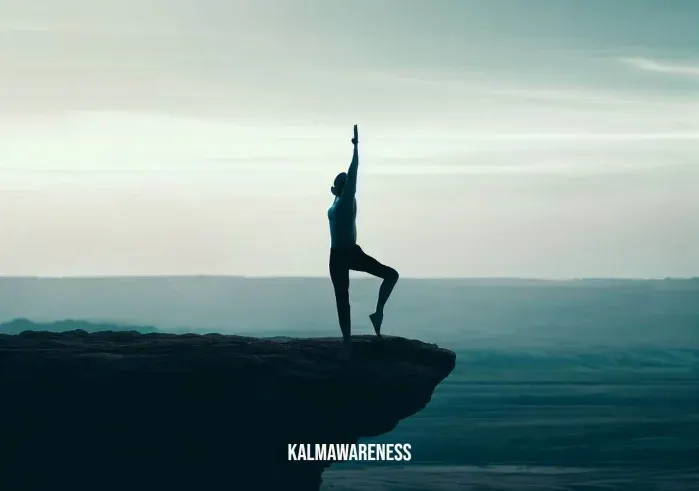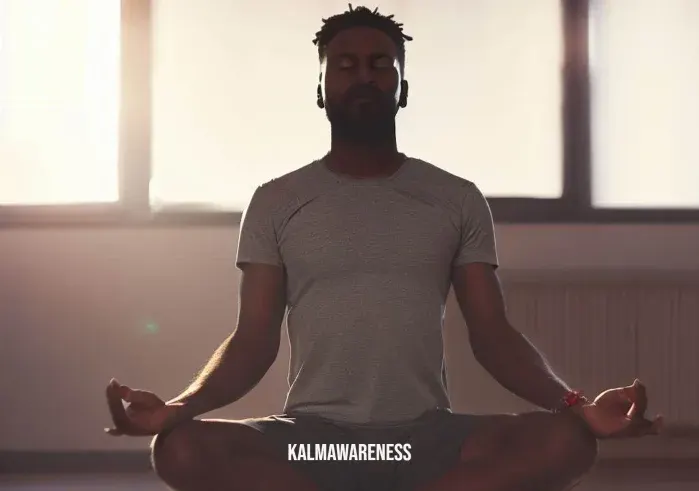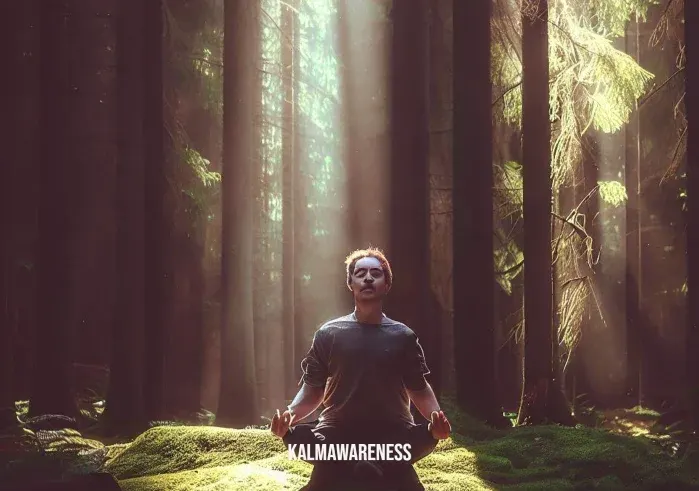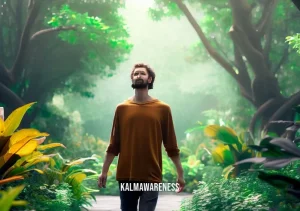The Serene Tree
| Description | Explanation |
|---|---|
| Pose Name | One Person Yoga Pose |
| Original Name | Vrikshasana |
| Difficulty Level | Intermediate |
| Pose Category | Standing Poses |
| Exercise Duration | Beginners: 30 seconds to 1 minute<br>Advanced: 1 to 3 minutes |
Yoga poses are not just physical exercises; they are a means to connect with our inner selves and find balance. In this article, we delve into the beauty and benefits of the One Person Yoga Pose, also known as Vrikshasana, which brings tranquility and strength to the body and mind.
The Harmony of Tree Pose
Rooted in ancient traditions, the One Person Yoga Pose symbolizes the stability and grace of a tall, serene tree. Like a tree, we ground ourselves and reach for the sky, finding both stillness and growth within. Embodying the qualities of focus, balance, and inner strength, this pose offers a transformative experience that harmonizes the body, mind, and spirit.
The Physical Challenge
As an intermediate-level pose, the One Person Yoga Pose invites practitioners to explore their physical limits while cultivating stability. The posture primarily engages the muscles of the lower body, including the legs, hips, and core. The added challenge of maintaining balance makes this pose an excellent choice for improving concentration and coordination.
Finding Your Inner Tree
To begin, stand tall at the top of your mat, with your feet hip-width apart and arms relaxed by your sides. Take a few deep breaths, allowing your body to settle into a calm state.
- Shift your weight onto your left foot, feeling the connection with the ground beneath you. Visualize yourself as a tree with deep roots, firmly planted in the earth.
- Slowly lift your right foot off the ground, bending your knee. Place the sole of your right foot against your left inner thigh. If this is challenging, you can rest your foot on your left calf or ankle, ensuring not to place it against your knee joint.
- Once you have found your balance, bring your hands to a prayer position at your heart center. Engage your core muscles to maintain stability.
- Take a steady gaze forward, focusing on a point in front of you. This Drishti, or focal point, will help you maintain balance and concentration throughout the pose.
- When you feel ready, gently extend your arms above your head, like the branches of a tree reaching toward the sky. Feel the energy flowing through your fingertips, creating a sense of expansion and openness.
- Hold the pose for the recommended duration, breathing deeply and finding tranquility within the stillness. Allow any thoughts or tension to dissipate as you embrace the present moment.
- To release the pose, gently lower your arms and bring your right foot back to the ground. Take a moment to notice the sensations in your body and express gratitude for the experience.
Embracing the Journey
As with any yoga practice, the One Person Yoga Pose is a journey of self-discovery. Be patient and compassionate with yourself as you explore this posture. Remember that balance and stability come with practice, and each attempt brings you closer to embodying the essence of a serene tree.
In the next part of this article, we will delve deeper into the benefits and variations of the One Person Yoga Pose, allowing you to expand your practice and find new dimensions of strength and mindfulness. So, join us in the next segment as we continue our exploration of this beautiful pose.

Embracing the Benefits and Variations
As we continue our journey into the realm of the One Person Yoga Pose, let us explore the myriad benefits, the considerations for practitioners, and the exciting variations that cater to different levels of experience. Embark on this transformative path, and discover the true power of this enchanting pose.
The Blissful Rewards
The One Person Yoga Pose offers a multitude of benefits for the mind, body, and spirit. By incorporating this pose into your practice, you can unlock its potential and experience the following advantages:
Physical Well-being
- Improved Balance: Balancing on one leg activates the muscles in the feet, ankles, and legs, enhancing stability and coordination.
- Stronger Core: Maintaining the pose requires engaging the core muscles, resulting in a stronger and more toned abdominal region.
- Increased Leg Strength: The standing leg in the pose is actively working, leading to improved strength in the thighs and calves.
- Enhanced Posture: Regular practice of the One Person Yoga Pose can correct postural imbalances and promote an upright, aligned spine.
- Better Concentration: The focus required to maintain balance in the pose enhances mental concentration and promotes mindfulness.
Mental and Emotional Well-being
- Calming and Grounding: The slow, deliberate movements of this pose induce a sense of tranquility and inner calm, reducing stress and anxiety.
- Improved Focus and Clarity: The concentration required in the pose helps sharpen mental focus and cultivates clarity of thought.
- Mind-Body Connection: By grounding ourselves in the present moment through this pose, we foster a deeper connection between our physical and mental states.
- Promotes Mindfulness: The One Person Yoga Pose encourages a state of mindful awareness, allowing practitioners to experience the present moment fully.
Exploring Limitations
While the One Person Yoga Pose offers numerous benefits, it is essential to be aware of its limitations and considerations. This pose may not be suitable for everyone, and certain precautions should be taken:
- Injury or Balance Issues: Individuals with ankle or knee injuries, as well as those with balance issues, should exercise caution when attempting this pose. Consider working with a qualified yoga instructor for modifications and support.
- Low Blood Pressure or Dizziness: If you have low blood pressure or a tendency to experience dizziness, it is advisable to modify the pose or practice it near a wall or with the support of a chair.
- Pregnancy: Pregnant individuals should approach the One Person Yoga Pose with caution and consult with their healthcare provider before attempting it. Modifying the pose by keeping the lifted foot against the lower leg can provide more stability.
- Recent Surgery or Chronic Health Conditions: If you have undergone recent surgery or have any chronic health conditions, it is crucial to consult with your healthcare provider before practicing this pose.
Always listen to your body and honor its limitations. If any pain or discomfort arises during the pose, ease out of it gently and seek guidance from a qualified yoga instructor or healthcare professional.
Embracing the Variations
Variations of the One Person Yoga Pose allow practitioners to explore and progress in their yoga journey. Here are some modifications and variations suited for different levels of experience:
- Beginner Variation: Start by practicing the pose near a wall for added support. Place your fingertips lightly against the wall while balancing on one leg to build confidence and stability.
- Intermediate Variation: Once you feel comfortable with the basic pose, challenge yourself by extending your arms overhead and lifting your gaze towards the ceiling. This variation intensifies the focus and balance required.
- Advanced Variation: For advanced practitioners, explore a deeper stretch by extending the lifted leg forward, keeping it parallel to the ground. This variation further engages the core and leg muscles.
Remember to progress gradually and respect your body’s limitations. Each variation offers its own unique benefits and challenges, allowing you to evolve your practice and delve deeper into the essence of the One Person Yoga Pose.

Unveiling the History, Spirituality, and Enhancements
As our exploration of the One Person Yoga Pose continues, we venture into the realms of history, spirituality, and the nuances that can deepen your practice. Delve into the wisdom and insights that accompany this beautiful pose, and discover how to maximize its potential while avoiding common pitfalls.
The Rich Tapestry of History
The One Person Yoga Pose carries a rich history that spans thousands of years. Tracing its roots back to ancient yogic traditions, this pose has been practiced and revered by yogis throughout the ages. While its exact origins may be difficult to pinpoint, it remains an integral part of the yogic tapestry, symbolizing strength, balance, and harmony.
Tapping into the Spiritual Essence
Beyond its physical benefits, the One Person Yoga Pose holds profound spiritual significance. By assuming the form of a tree, we connect with the inherent wisdom and serenity of nature. This pose represents the unification of earthly grounding and celestial expansion, reminding us of our connection to the universe.
Cultivating Mindfulness and Intention
To deepen your spiritual experience within this pose, consider incorporating the following elements:
- Breath Awareness: Focus on your breath as you move into the pose, allowing it to guide you deeper into a state of mindful presence.
- Setting an Intention: Before assuming the pose, set a personal intention that aligns with your values and aspirations. This intention will infuse your practice with meaning and purpose.
- Visualization: Imagine yourself as a tree, rooted firmly in the ground, with branches extending upwards to absorb the energy of the universe. Visualize the strength and stability of the tree as you hold the pose.
- Gratitude Practice: Express gratitude for the natural world and its gifts as you embody the One Person Yoga Pose. Appreciate the interconnectedness of all living beings and the support they provide.
Unleashing the Full Potential
To ensure a fulfilling practice of the One Person Yoga Pose, here are some tips to help you make the most of your journey:
- Find Your Alignment: Pay close attention to your alignment in the pose. Ground through the standing foot, lengthen your spine, and engage your core for stability and balance.
- Explore the Edge: Push your boundaries gently by gradually increasing the duration of the pose. Challenge yourself to hold it for a few seconds longer each time, while always maintaining proper form.
- Listen to Your Body: Be attuned to the messages your body communicates. Respect its limits and avoid pushing yourself beyond what feels comfortable. Remember, yoga is a practice of self-care and self-compassion.
- Embrace the Imperfections: Yoga is a journey of growth, and progress comes with time. Release the need for perfection and embrace the beauty of your unique practice. Accept and appreciate where you are in your yoga journey.
Navigating Common Mistakes
To ensure a safe and effective practice, it is important to be aware of common mistakes and how to avoid them:
- Overarching the Lower Back: Maintain a gentle engagement of the core muscles to avoid excessive arching of the lower back. Imagine a thread pulling your navel towards your spine to support proper alignment.
- Holding Tension in the Shoulders: Relax the shoulders away from the ears and soften any unnecessary tension. Allow your shoulder blades to slide down your back, promoting an open and relaxed upper body.
- Straining the Neck: Keep the neck aligned with the spine by avoiding excessive tilting or craning. Maintain a neutral position, lengthening the back of the neck.
- Lack of Focus: Maintain a steady gaze and cultivate a sense of concentration throughout the pose. This focus will help enhance your balance and stability.
Modifications for Individual Needs
Yoga is an inclusive practice that can be adapted to meet individual needs and circumstances. Consider these modifications if you have specific injuries or limited flexibility:
- Lower Body Support: If you have difficulty balancing or have ankle or knee issues, practice the pose near a wall or use a chair for support. Resting the lifted foot against the calf or ankle can also provide additional stability.
- Chair Variation: For those with limited mobility or who are unable to stand, you can modify the pose by sitting on the edge of a sturdy chair. Align your spine, extend one leg forward, and position the sole of the other foot against the inner thigh.
- Props for Support: Utilize props such as blocks or a wall for added support during the pose. These props can assist in maintaining balance and stability while allowing you to focus on alignment and breath.





![calling energy back _ Image: [A futuristic image of the same urban street, now transformed. The buildings have vertical gardens with integrated solar panels, and electric vehicles pass silently. The streetlights automatically adjust their intensity based on natural light.]Image description: A futuristic urban street transformed by sustainable practices. Vertical gardens adorn the buildings, showcasing harmony with nature. Integrated solar panels provide power, and electric vehicles glide silently. Intelligent streetlights adjust their brightness according to natural light levels.](https://kalmawareness.com/wp-content/uploads/2023/09/208_5-300x211.webp)